 3
3
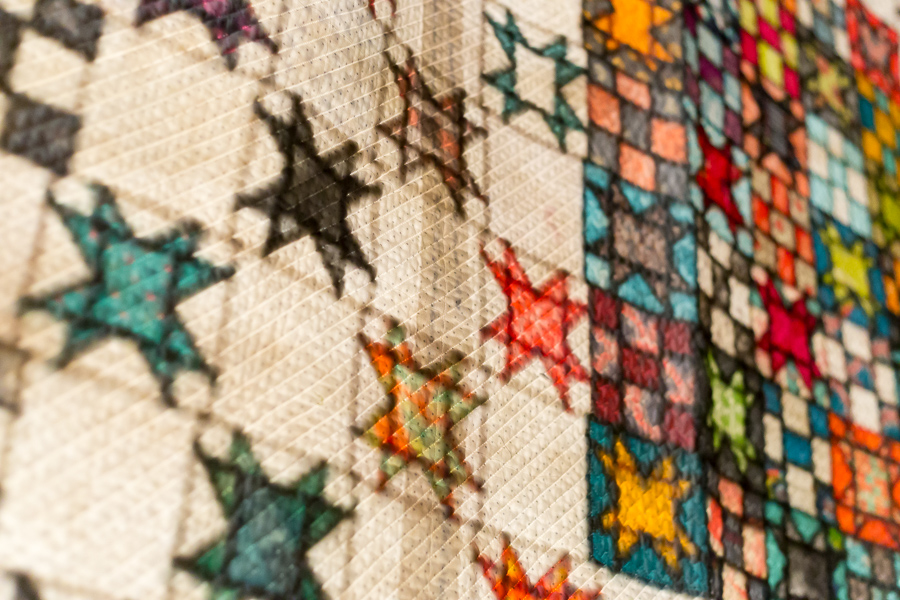
Does Finishing a Quilt Make a Difference?
By Marian Ann J. Montgomery, Ph.D.
Curator of Clothing and Textiles, Museum of Texas Tech University
Sometimes we get a quilt top done and just don’t have the energy, creativity or stamina to quilt it. Does it matter if we leave it as a top? From a museum curator’s point of view, it does matter if the quilt is finished. With limited storage space, curators have to make hard choices about what to bring into the collection and what to decline. For me, the hardest thing about being a curator is turning down objects that are offered for the collection.
Each object that comes in goes through a lengthy process that takes about 8 hours to process before it is finally rolled on an acid free tube and put away in storage. And each quilt requires about $100 of storage supplies, i.e. tube, acid free tissue, pipe. So I have a rule of only bringing in completed quilts, unless the top is extraordinary. This wasn’t always the case at the Museum of Texas Tech University. There are quilt tops in the collection, but very few have had sleeves sewn on them so that they can be professionally photographed. When it comes to exhibits, completed quilts take precedence over quilt tops.
Back in 1983 the James H. Martin family brought several items to donate to the Museum of Texas Tech University, including a Crazy Quilt Top. Lining the trunk of the car that day was a finished quilt that caught the eye of the curator who asked if the family would donate that also. The quilt had a great story. It lined the floor of the covered wagon in which the family brought their possessions the 275 miles or so from Stephenville in East Texas to Terry County in West Texas in 1921. The family members thought more highly of the unfinished Crazy Quilt Top, but the curator, probably Betty Mills, lobbied also for the finished quilt. The story of the quilt caught my attention when selecting quilts for the 2016 exhibit, Legacy of a Thousand Stitches; Quilts of the Museum of Texas Tech University. Clearly it is a utilitarian quilt and one that received heavy use over the years because of the repairs along the binding done with flour sack fabric, but it has a strong graphic quality and a terrific story, making it a good candidate for exhibition.
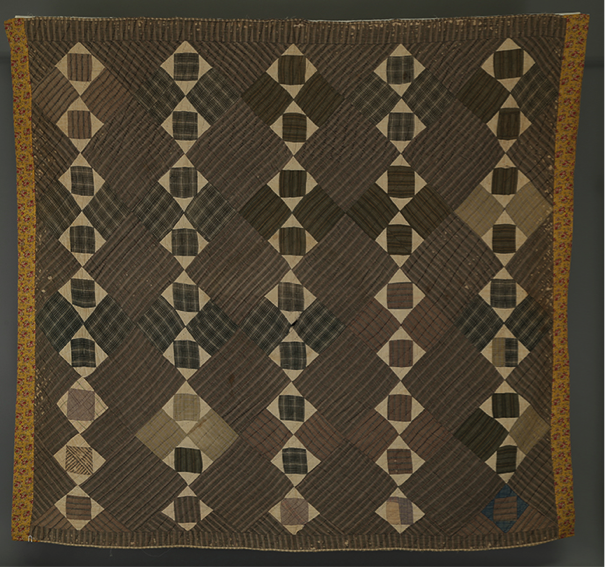
Four Patch within Square on Square set on Point Quilt created by Pearl Bench Martin 1880-1910 in Stephenville, Texas.
Gift of James H. Martin Family, TTU-H1983-064-002. Photo courtesy of the Museum of Texas Tech University.
Wanting to include the Four Patch within Square on Square set on Point Quilt in the exhibit meant I needed to dig a little further to find out about the quilt maker. Contact with a surviving family member yielded the following picture of the quilt maker and information. Pearl Bench Martin was born November 16, 1899 in Leonard, Fannin County, Texas. On December 20, 1916 she married James Haeckel Martin and they had four children. They moved from Stephenville to Terry County in 1921. She was an accomplished housewife and seamstress who regularly quilted, crocheted and sewed clothing for her family. She frequently used flour sacks in her sewing projects. The family recalls that when visitors arrived at her home, they were greeted with the fresh aromas of the kitchen, a plate of sugar cookies and warm hugs. Her Angel Food cakes were the highest ever seen by family members.
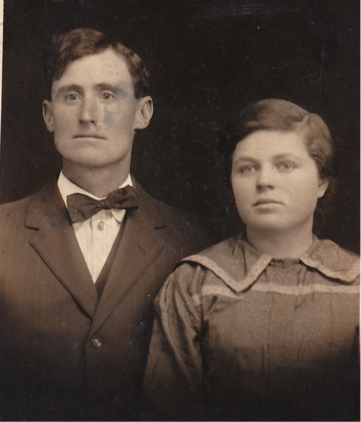
Pearl Bench and James Haeckel Martin at about the time of their wedding in 1916.
Photo courtesy of Dr. and Mrs. Howard Hurd II (Redelle Martin).
The Martin family treasured her Crazy Quilt Top more than the Four Patch Quilt and Pearl likely did as well because she didn’t use it to line the bed of the covered wagon. But it is unfinished and never crossed my radar for inclusion in the exhibition because there were good finished crazy quilts to show. To be fair, many crazy quilts were never quilted given how problematic quilting them is and because they were often intended to showcase the lady’s needlework skills in the parlor and not use on a bed. Since they weren’t intended as bed coverings, Crazy Quilts were seldom laundered, so quilting wasn’t important.
The Crazy Quilt Top includes a wide variety of embroidered motifs such as birds, an Oriental man, fans, butterflies, flags and hands. There are two embroidered hands, one is inscribed “Jim 1898” and the other “Gus”. The names of Pearl and James’ children are on the quilt: Mae, Robert, Jim 1898 and Gus. Since the exhibit, Mrs. Martin’s granddaughter has brought visiting family members in several times to see the Crazy Quilt Top and to tell stories of the people represented on the quilt and these family members don’t seem to care if they get to see the finished quilt. But it is the finished quilt that intrigued the Museum’s curators enough to preserve Mrs. Martin’s needlework and to publish information about her in the catalog that accompanied the exhibit. Had her finished utilitarian quilt not been used to line the car trunk the day the donations came in you likely wouldn’t have heard about Mrs. Martin. So finish those quilts—besides finished quilts are easier to sew a sleeve to for photography. For this reason we only have a work image of the Crazy Quilt Top.
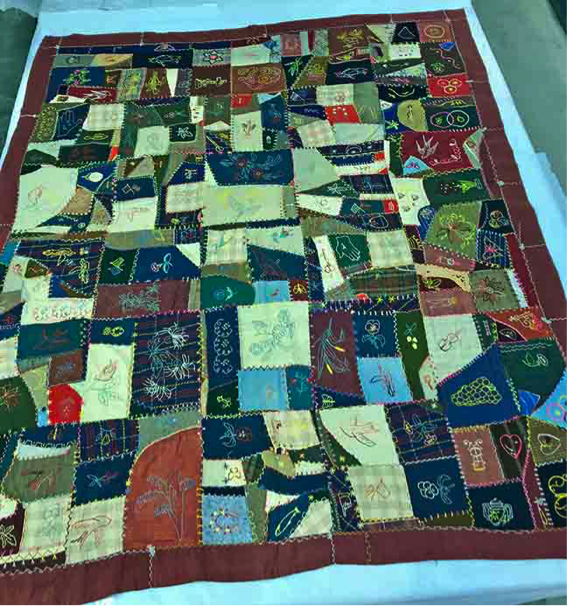
Crazy Quilt Top, circa 1898 by Pearl Bench Martin (Mrs. James Haeckel).
Gift of James H. Martin Family, TTU-H1983-064-001.
Photo courtesy of the Museum of Texas Tech University.



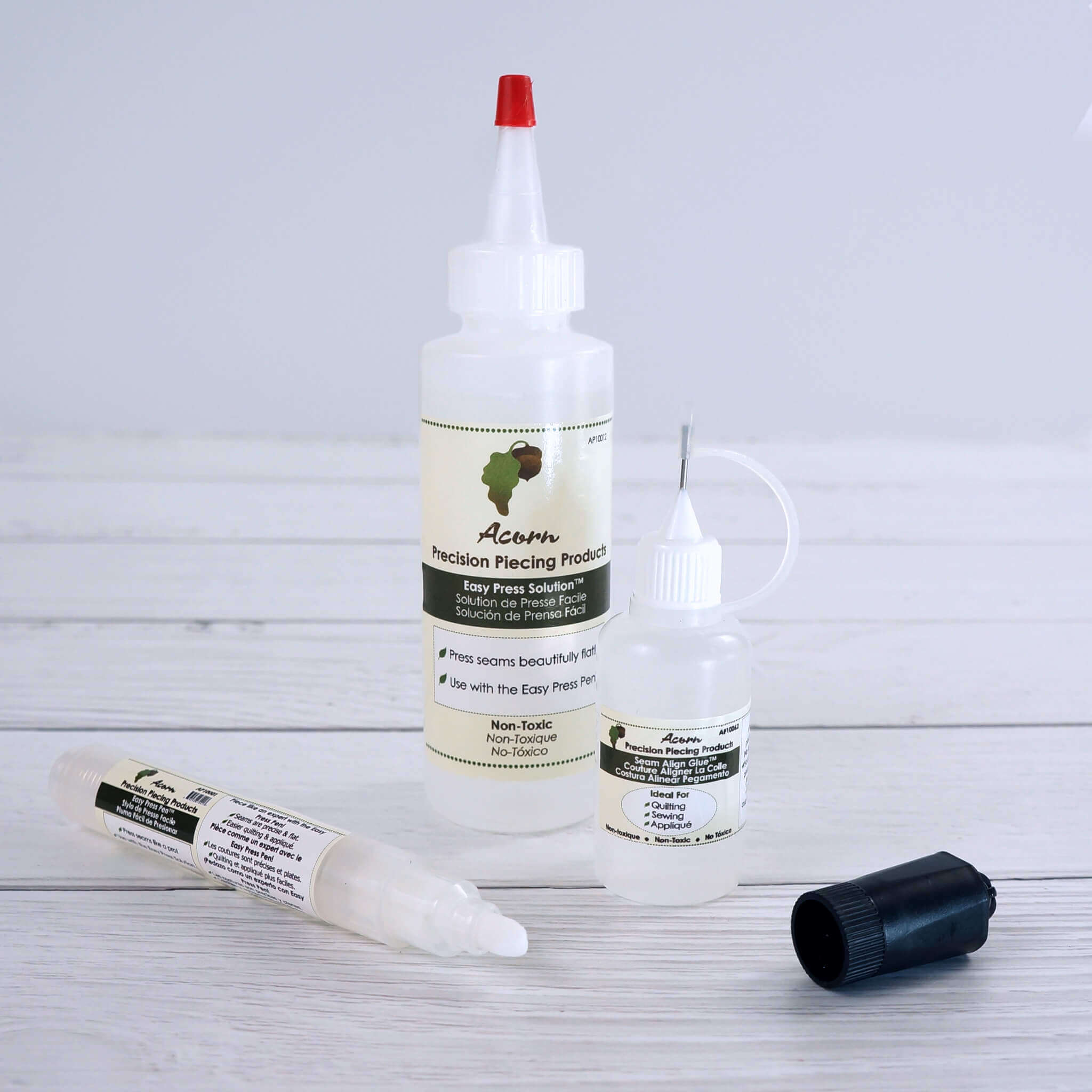
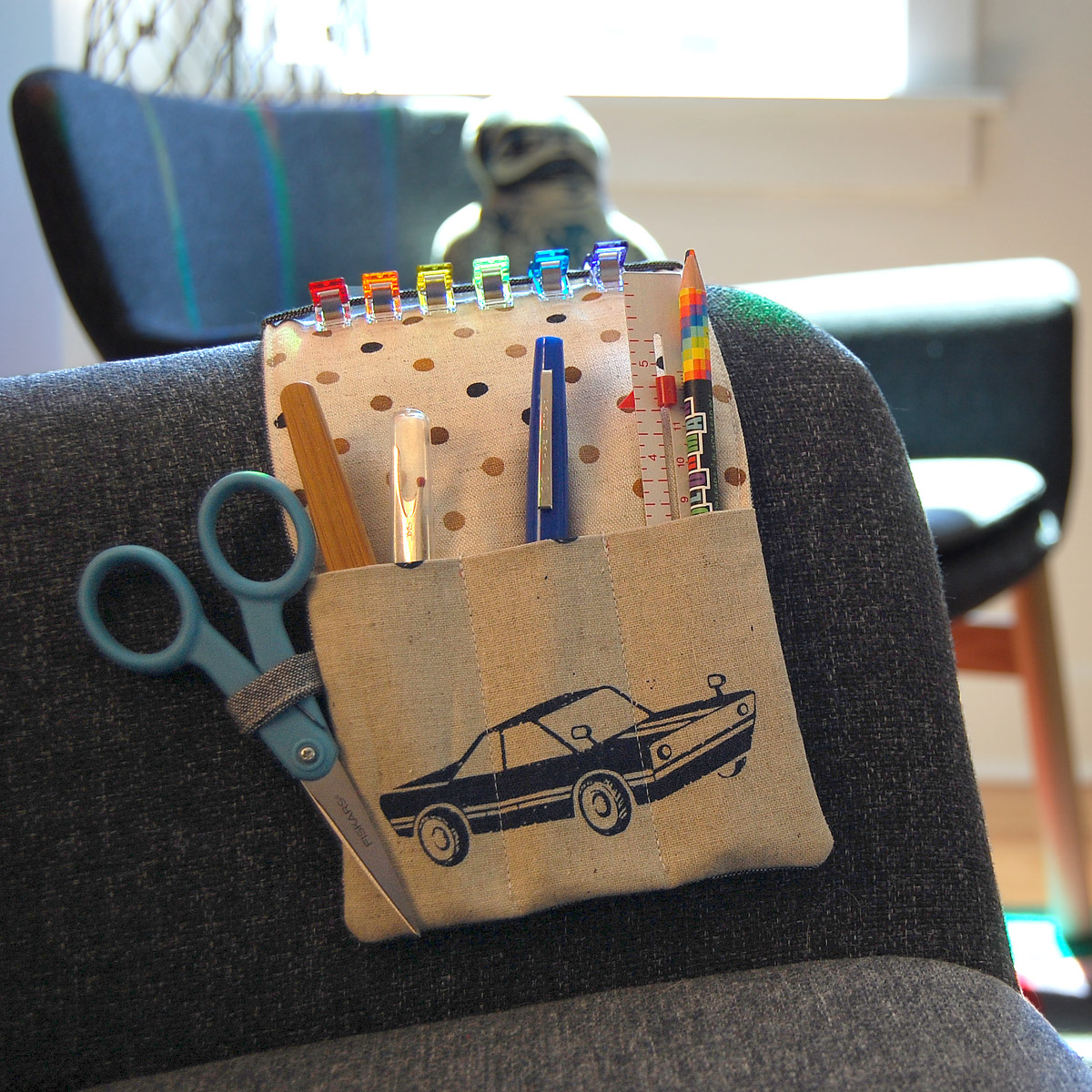

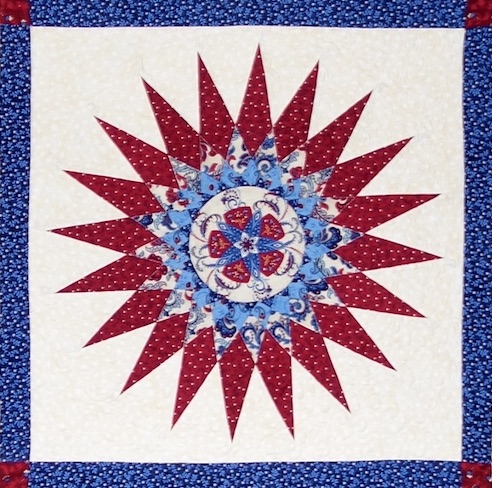 Quilt Historian
Quilt Historian 








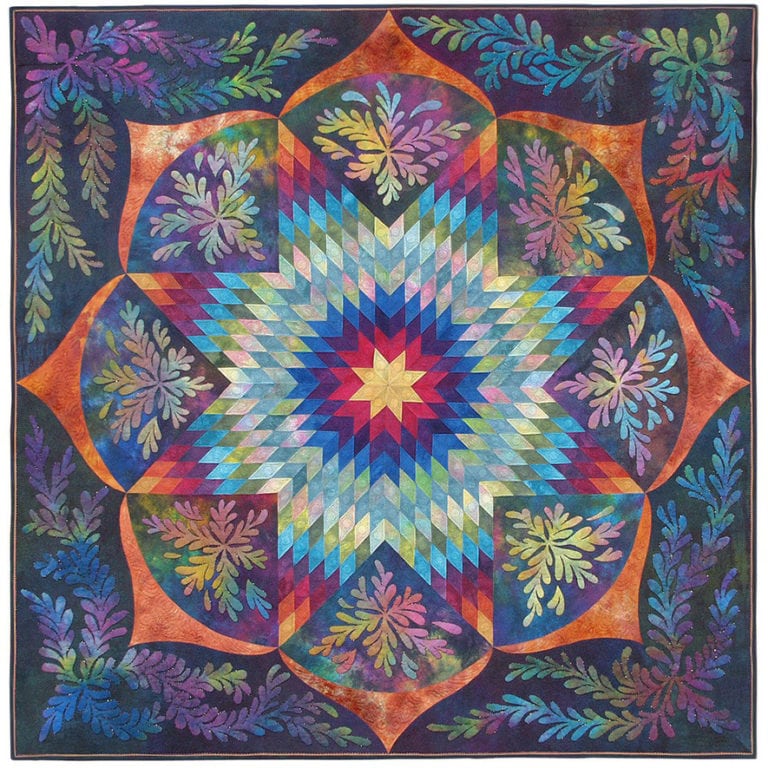

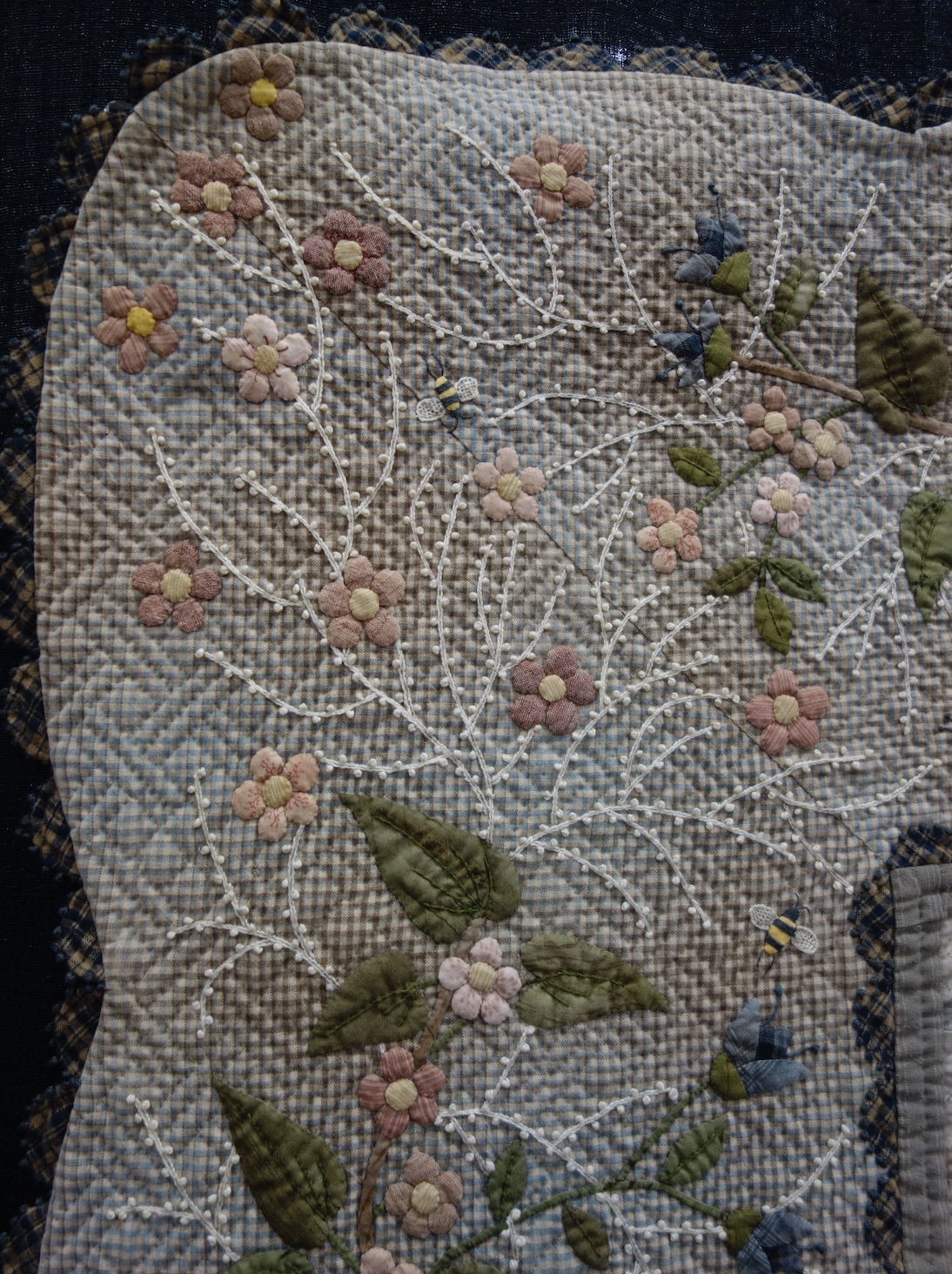
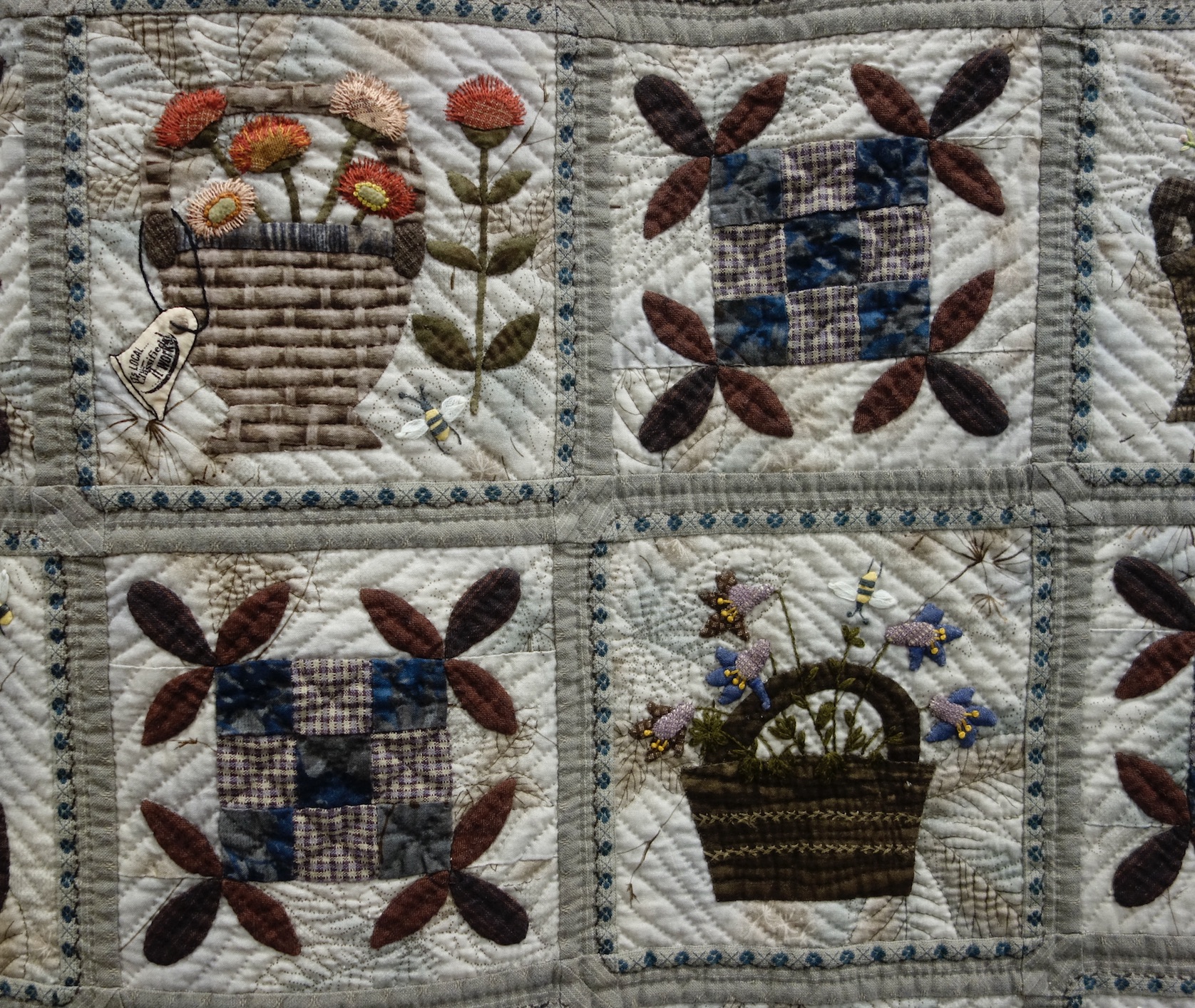
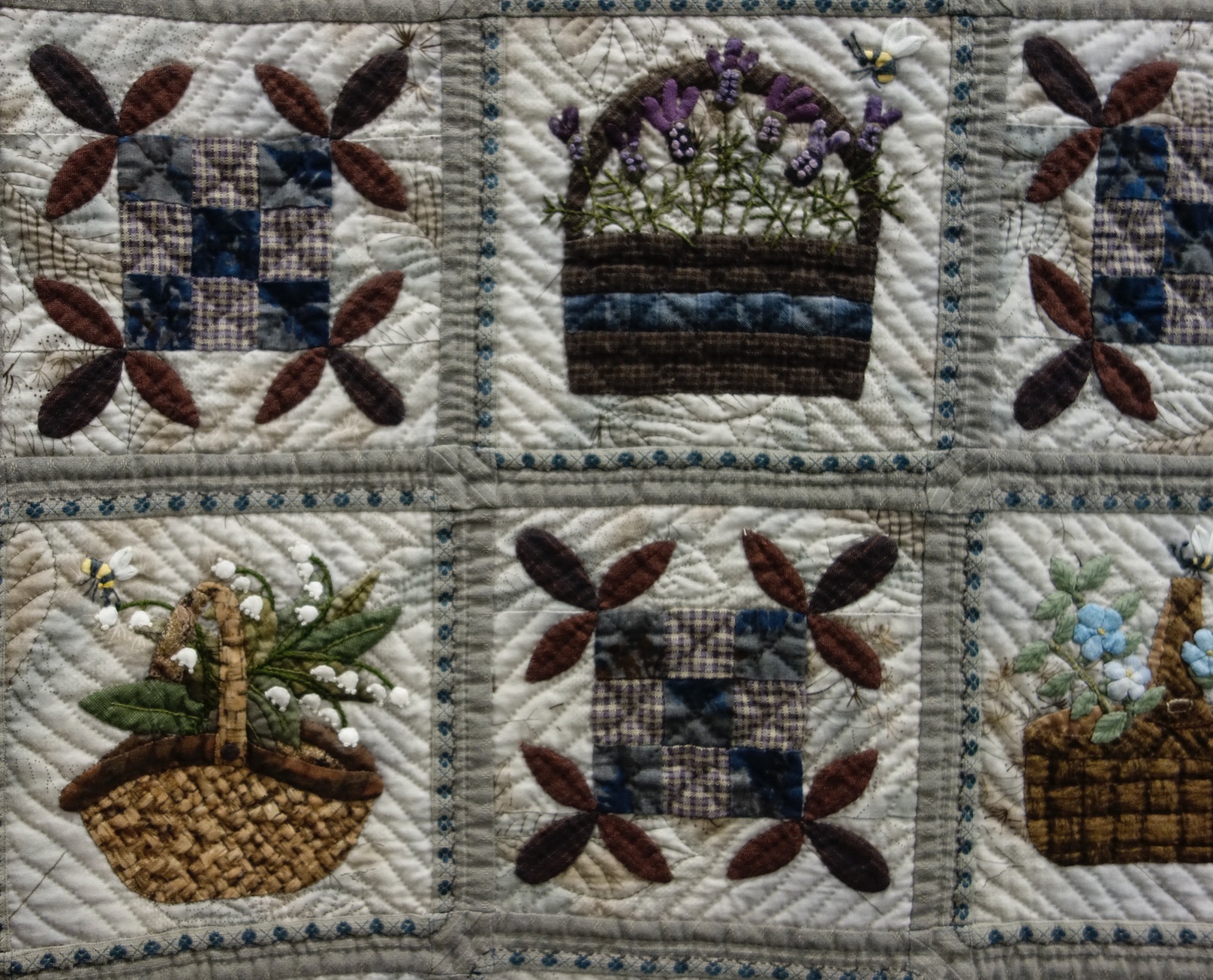
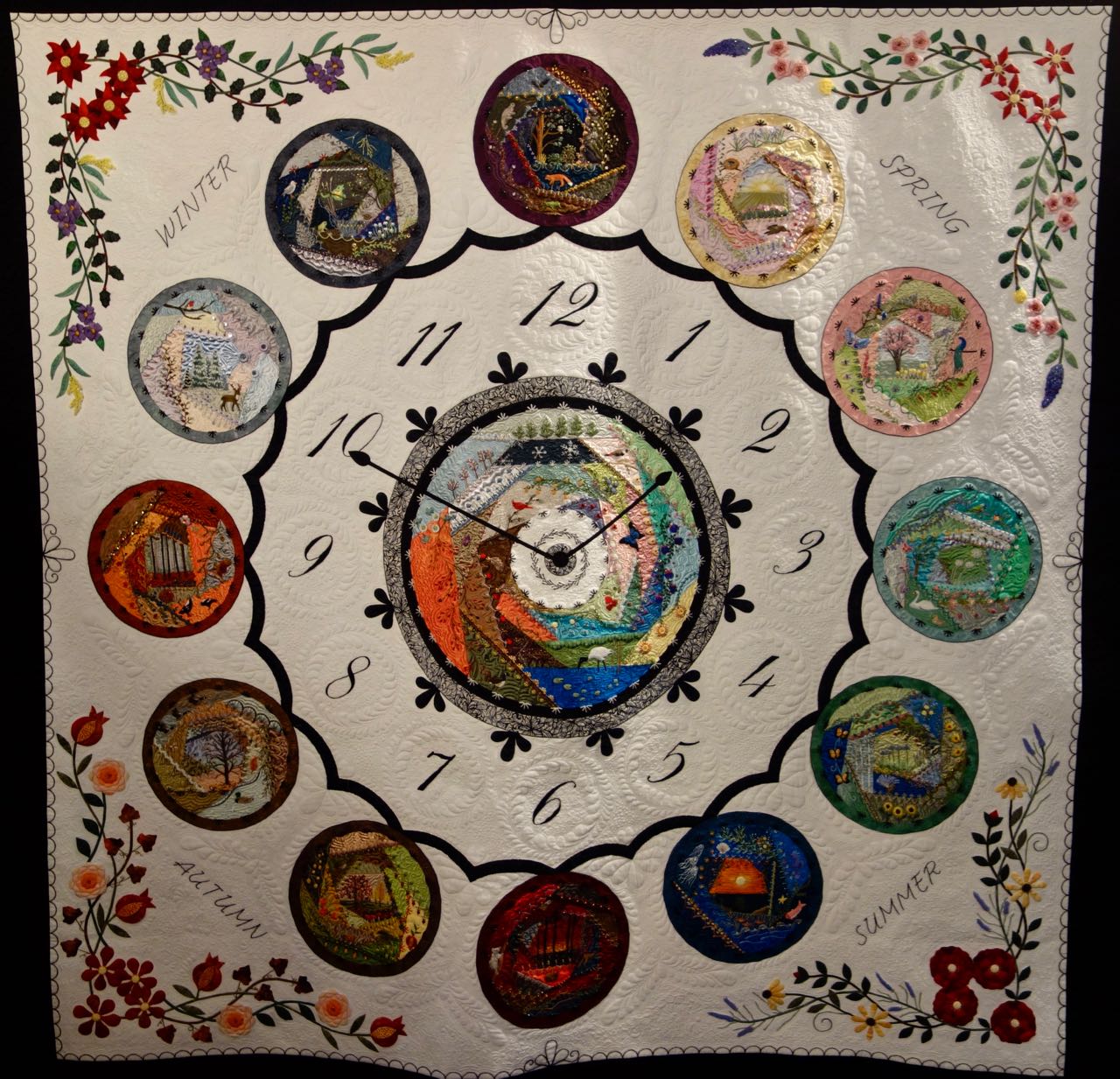
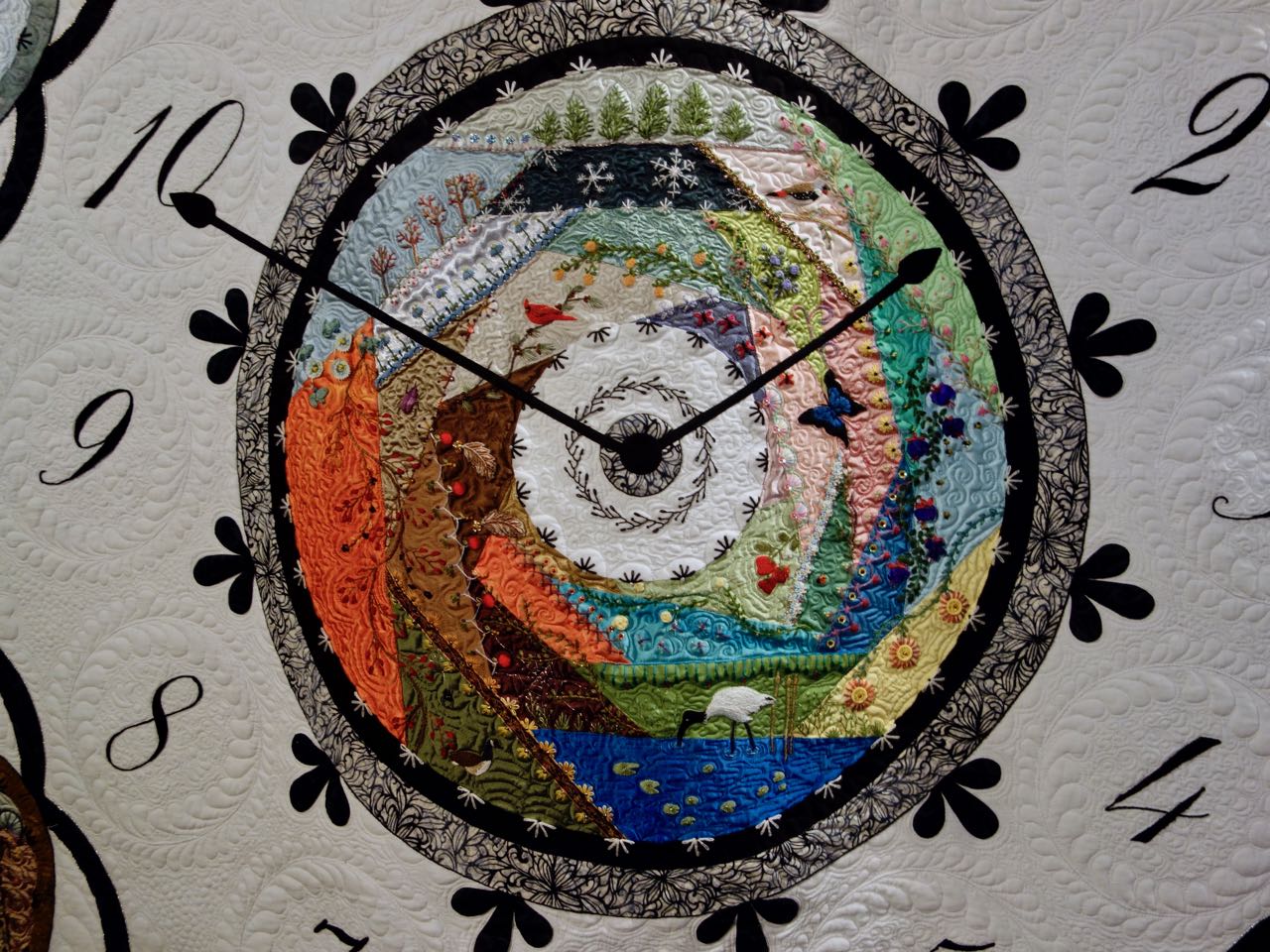
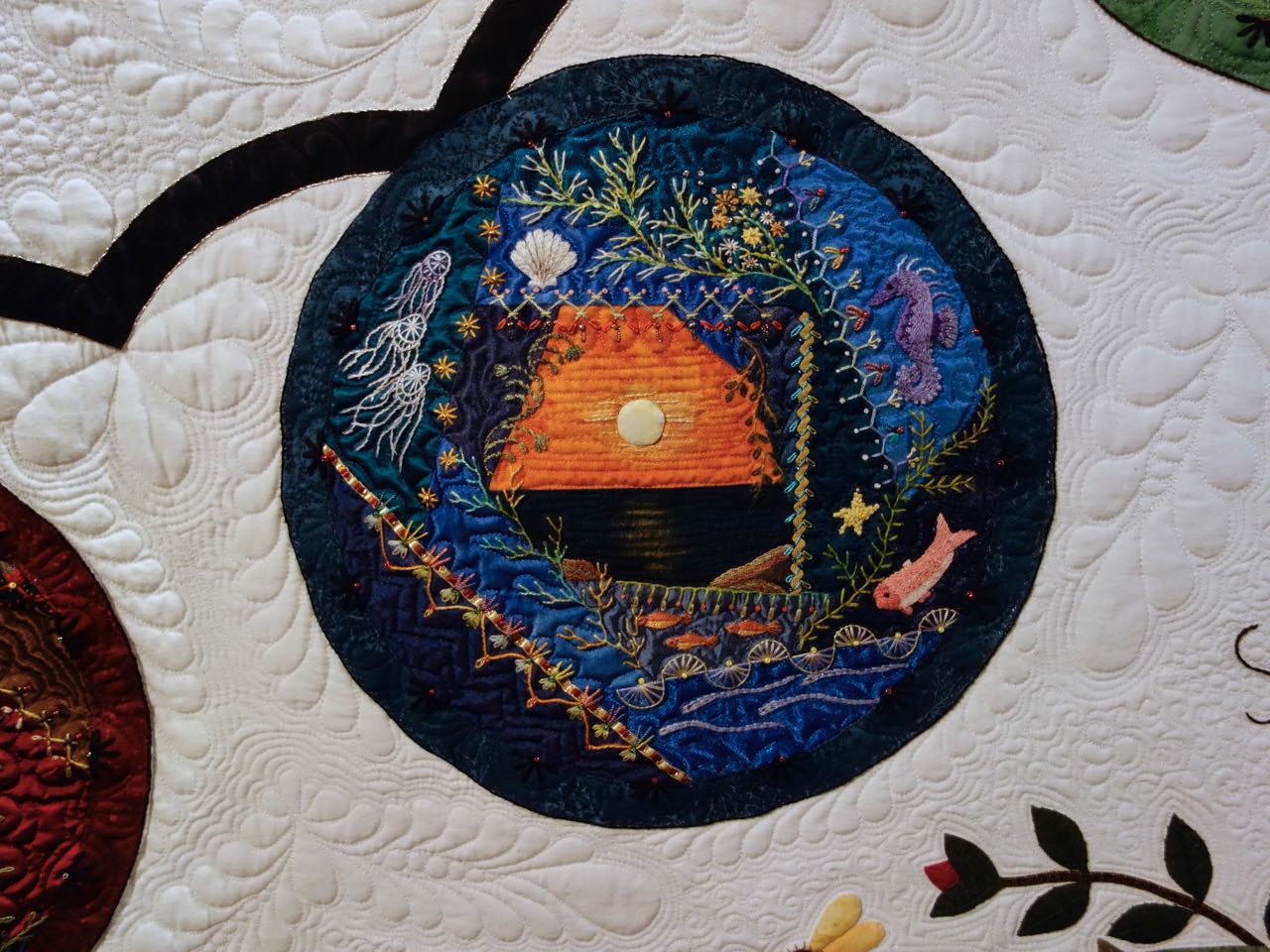







.jpg)


